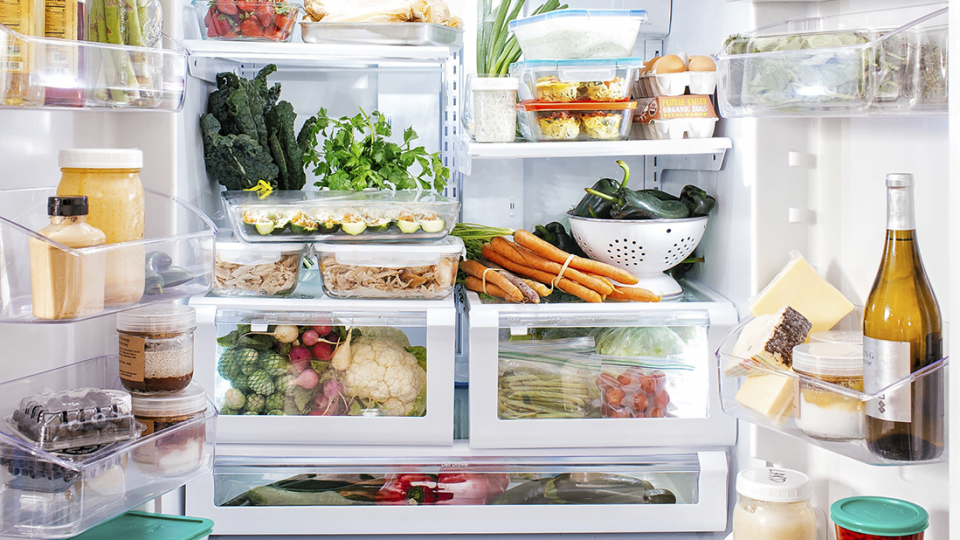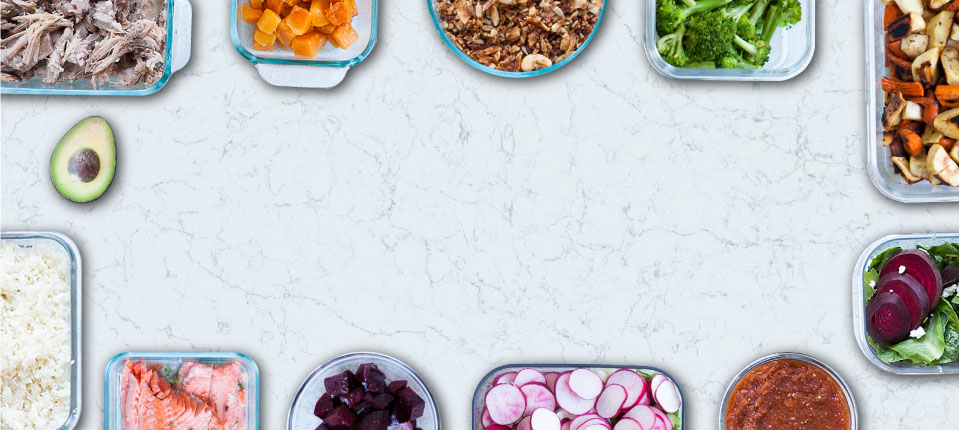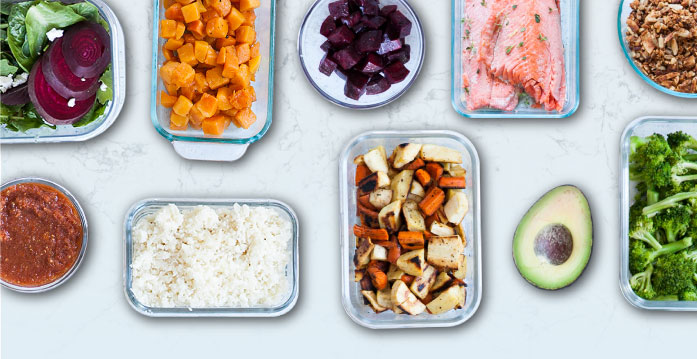Maintaining a list of always-there items in your pantry, refrigerator, and freezer allows you to mix and match, quickly pulling together a delicious meal.
It also streamlines your shopping so that you can buy “always have” items on subscription and mostly shop for specialty items.
Customize your capsule kitchen
Of course, the biggest challenge when giving advice about kitchen essentials is that one person may be on a keto diet and , another following a paleo diet, and still another with multiple food allergies.
But, the whole point of a capsule kitchen is that you customize it to fit your family’s needs.
When it comes to meal planning, having a well-stocked kitchen with variations on rotating ingredients allows you to simplify your weekly plan.
Because let’s be honest, who doesn’t have a specialty item in their kitchen that they’ve used only once?
That’s what we thought.
It’s a minor tragedy to see food waste away in your kitchen. If your meal plan requires something you don’t normally cook with, a capsule kitchen will help determine whether or not it’s worth splurging on or if you’d rather choose another recipe.
What you want to cook vs. what you really do cook
What you want to cook might be very different from what you have time to cook and what your family will actually eat. And the number one principle of a capsule kitchen is to have ingredients on hand that will carry you through multiple meals.
When putting together your list of essentials for your capsule kitchen, keep in mind what you actually use on a daily or weekly basis.
Leave room for fresh and new food ideas.
And remember that there may be days when you don’t want to cook at all – but your family still needs to eat. So, be sure to include some freezer meals .
Kitchen essentials for the pantry
Vinegar and oils like apple cider vinegar, balsamic vinegar coconut oil, and ghee.
Baking essentials like alternative flours (store almond flour in the freezer), unrefined sweeteners like honey and maple syrup, baking soda, and cocoa powder.
Dry bulk goods like lentils, beans, quinoa, millet, and shredded coconut.
Spices like oregano, cumin, taco seasoning, Italian spice blend, and others that you turn to most when cooking. Consider including time-saving spices like garlic granules and onion powder.
Canned goods like coconut milk, sardines, canned salmon or tuna, and diced green chilies.
Jarred goods like salsa, tomato sauce, tomato paste, olives, tahini, peanut butter, and jam.
Condiments like ketchup, mustard, and BBQ sauce.
Kitchen essentials for the fridge
Eggs, butter, cheese, yogurt, and milk are always good to have on hand if they comply with your diet.
Hearty leafy greens and root veggies like kale, collards, carrots, cauliflower, and broccoli. If your veggies are beginning to wilt, blanch and freeze them.
Pre-cooked rice, quinoa, or millet can be repurposed into a quick stir fry.
Jammy, boiled eggs can be made ahead of time in a large batch and stored for up to one week.
Dates and dried fruit in opened packages fare best when stored in the refrigerator or freezer.
Seeds and nuts like flax, hemp, pumpkin, walnuts, and almonds. Because their oils can go rancid, store these in airtight containers in the refrigerator.
Kitchen essentials for the freezer
Frozen fruit like strawberries, mango, and blueberries are handy for baked goods and smoothies.
Frozen veggies like precut broccoli, cauliflower, and onion make meal prep a snap.
Cauliflower rice uncooked and frozen flat in meal-sized portion of 1 to 3 cups.
Uncooked meat like beef, chicken, pork, bacon, and sausages.
Defrost in your refrigerator or cook frozen directly in your Instant Pot – just be sure to stick with smaller cuts of meat, cover with extra cooking liquid, and increase the cook time by 50%.
Pre-cooked meatballs and ground beef can go directly into a slow cooker for chili or stirred into a quick weeknight soup. Warm it up with salsa for easy tacos or pasta sauce for a quick bolognese.
Tomato sauce, White Bean Chili , Spaghetti Zoodle Bolognese , and pesto all freeze beautifully. Freeze in meal-sized portions of 1 to 3 cups.
Braised meat like Cuban Slow Cooked Pork in wide mouth jars, torn into big chunks and surrounded by braising sauce.
Be sure to cool in the refrigerator before storing in your freezer. And leave a little headroom for expansion.
Vegetable, beef, and that has been frozen into 1/2 cup cubes, making it easier to thaw and use.
A bag for collecting leftover bones and veggies scraps that can be transformed into broth later on.
Roasted sweet potatoes that have been frozen whole and unpeeled. Thaw and eat plain, mash as a side dish, or cook into a casserole.
Roasted butternut squash can be frozen for a quick side. Cube, roast, and store in 1-cup portions.
Assembled (but not cooked) casseroles like this paleo cheeseburger casserole, for those days when you just can’t. Be sure to label the casserole with a date and cooking instructions. You’ll thank us later.
Paleo fudge, dark chocolate covered almonds, and homemade cookie dough can be made to fit almost any diet type.
Pie crust is a time-saver if you bake quiche and pies often.


